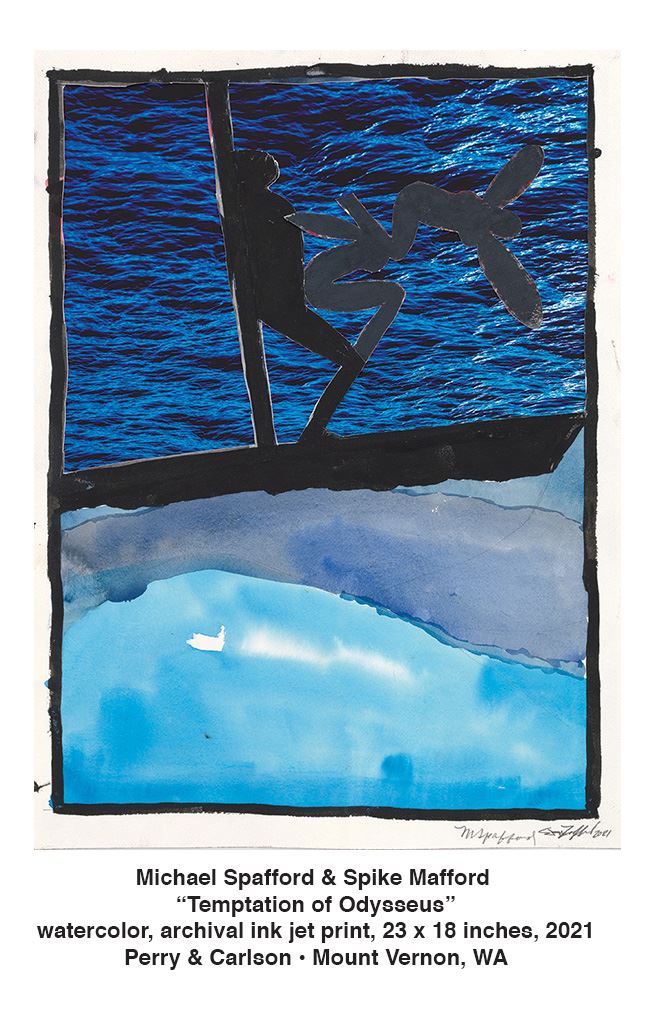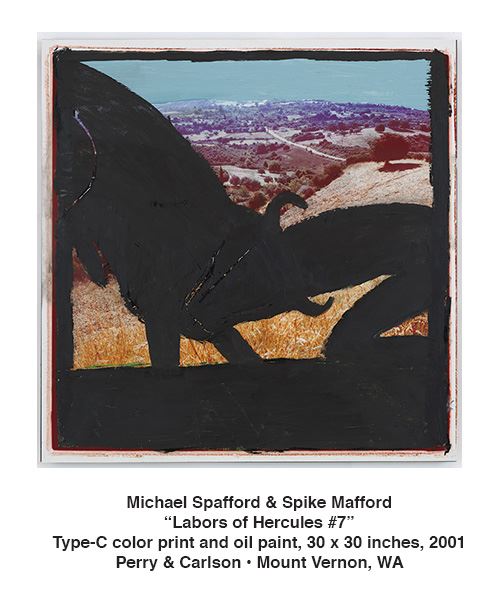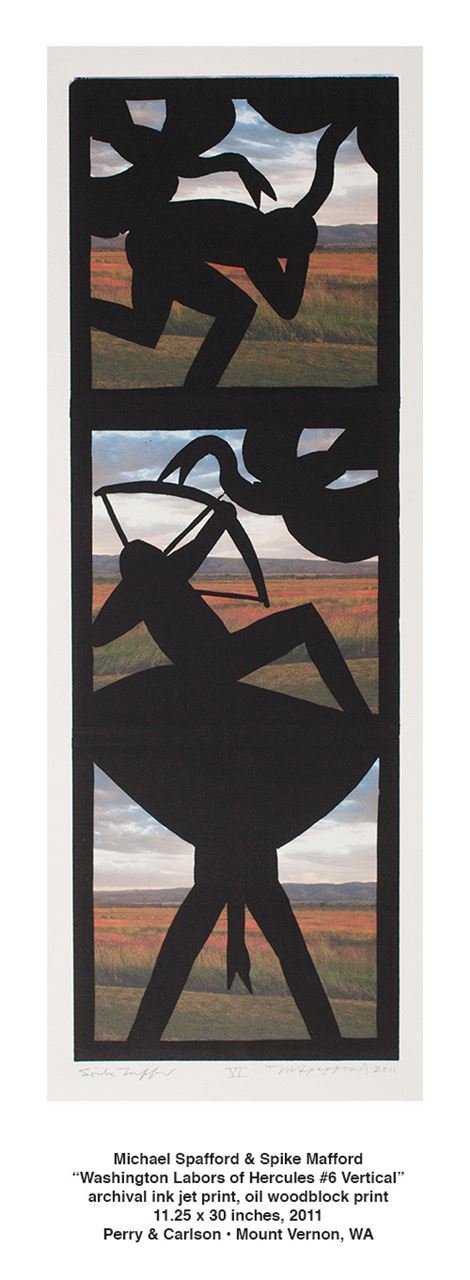.jpg)

What does a successful collaboration require? How can an epic and ancient tale be combined with a moment captured in the present? The upcoming exhibition at Perry and Carlson in Mount Vernon addresses these questions and more. The show provides guests with an opportunity to experience a collaboration by two well-known Northwest artists working in drastically different media: Michael Spafford and Spike Mafford. From 2000 to 2021, these artists went on an adventure of collaboration. To many, photography and painting have almost no attributes in common, and yet these artists decided to combine their talents to connect Spafford’s epic masterpieces with Mafford’s ability to capture the moment.
Michael Spafford’s work is iconic and instantly recognizable, especially in the Northwest. Rooted in Greco-Roman epics and mythology, his work utilizes ancient themes to comment on issues in our contemporary society. Often the fundamental theme is masculinity, or perhaps how our idea of masculinity has influenced popular thought about war, sex, and the concept of achievement through herculean effort. But Spafford describes himself first and foremost a formalist, meaning that the formal qualities of his work are his focus. Spafford achieves his aesthetic goals through line, composition, color, shape, and balance, not through the content of his work. This is one reason this collaboration is so interesting.
 In contrast to Spafford, Spike Mafford’s photography focuses on the real and the physical. In fact, the differences between their chosen mediums are a topic of conversation between the father and son pair. The methodology of painting is inherently different than photography. The evidence left by the artist’s hand and how each medium communicates ideas are also different. But like Spafford, Mafford focuses on the compositions in his photographs. He can capture a specific moment in time while also alluding to the unknown outside the borders of the picture plane. The dynamic and mysterious images often comment on the passage of time and nostalgia; two fascinating themes in connection with mythology.
In contrast to Spafford, Spike Mafford’s photography focuses on the real and the physical. In fact, the differences between their chosen mediums are a topic of conversation between the father and son pair. The methodology of painting is inherently different than photography. The evidence left by the artist’s hand and how each medium communicates ideas are also different. But like Spafford, Mafford focuses on the compositions in his photographs. He can capture a specific moment in time while also alluding to the unknown outside the borders of the picture plane. The dynamic and mysterious images often comment on the passage of time and nostalgia; two fascinating themes in connection with mythology.
In 2000, the two artists were awarded a grant from the Behnke Foundation which provided them the opportunity to collaborate. The pair and their families went on an adventure to Greece to find the sites of the labors of Hercules, an ancient epic that is also one of Spafford’s main subjects. In essence, Hercules must undertake twelve labors that are seemingly impossible, including kidnapping Cerberus and defeating the Lernaean Hydra. Finding the sites was not easy. According to Mafford, the artists used both ancient and contemporary maps to identify possible locations. After asking a few locals, they finally found the site of each labor, which Mafford then photographed to capture the landscape as a background for Spafford. Back at the studio, Spafford painting the characters on the large photographs. 
It is interesting to note that the act of finding the locations, photographing them, and then painting over the photographs is epic. Like a work of performance art, the artists journeyed to each site and then had the monumental task of blending their two mediums to convey an ancient story. After taking the time to identify the physical locations, Spafford then painted on the photographs, a challenging task. The resulting artworks are gestural yet removed, timeless but also a moment in an ever-changing landscape. One aspect that this viewer finds very fascinating is the juxtaposition of perspective in the work. Spafford’s compositions are composed of minimal and direct shapes and lines, while Mafford’s photographs portray a vast landscape that the viewer imagines extends far beyond the frame. This tension makes the collaborations even more dynamic, as there is an inherent push and pull occurring throughout.
In addition to the labors of Hercules, the pair also revisited another Spafford series: “The Swimmers.” Like Hercules, Olympic swimmers vanquish natural elements to obtain victory and then are celebrated for their achievements. Photographs of water are overlayed with black paint that must have been challenging to channel on the slippery surface. All these artworks provide a unique opportunity for the viewer to gain insight into various artistic practices. There is something compelling about reducing an epic to its visual, formal qualities and then placing that composition on top of a photograph of the physical backdrop. This artistic test raises numerous questions about abstraction, realism, the visual passage of time, and how concepts are communicated in art. It is certainly a collaboration that should not be missed.
 Chloé Dye Sherpe
Chloé Dye Sherpe
Chloé Dye Sherpe is a curator and art professional based in Washington State.
“Michael Spafford & Michael Spafford: Collaborations 2001-2021” opens Saturday, August 7, 2-5 P.M. at Perry and Carlson located at 504 South 1st Street in Mount Vernon, Washington. Visit www.perryandcarlson.com for more information.